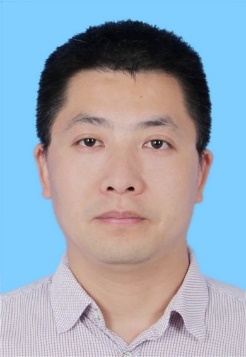Agriculture & Biotechnology Research Center

Liu Xuncheng
Highest Education
Post
Chenhuanyong Professor
Phone
020-37083652
Email
xunchengliu@scib.ac.cn
Office
Education and Appointments
2005.9 ~ 2008.6, Ph. D., South China Botanical Garden, Chinese Academy of Sciences
2008.10 ~ 2012.7, Postdoctoral researcher, National Taiwan University
2012.9 ~ now, Researcher, South China Botanical Garden, Chinese Academy of Sciences
Research Interest
We are interested in understanding the molecular mechanism by which epigenetic factors regulate gene expression in plants. Our research program is focused on the histone acetylation, one of the most universal histone modifications in eukaryotes. Reversible histone acetylation and deacetylation play crucial roles in multiple development processes, as well in response to biotic and abiotic stresses. Beside histone proteins, acetylation also occurs in non-histone proteins. Non-histone acetylation plays an important roles in manipulating the turnover, subcellular localization and structure of proteins. Recently, we are also interested in the study the role of non-histone acetylation in plant development.
Public Services
Honors
Selected Publication
1.Gu D., Chen C-Y., Zhao M., Zhao L., Duan X., Duan J.*, Wu K.*, Liu X.* (2017) Identification of HDA15-PIF1 as a Key Repression Module Directing the Transcriptional Network of Seed Germination in the Dark. Nucleic Acids Res. 12, 7137-7150.
2.Zhao L., Peng T., Chen C., Ji R., Gu D., Li T., Zhang D., Tu, Y., Wu K, Liu X.* (2019) HY5 Interacts with the histone deacetylase HDA15 to repress hypocotyl cell elongation in photomorphogenesis. Plant Physiol. 180: 1450-1466
3.Yang, J., Yuan, L., Yen, M.R., Zheng, F., Ji, R., Peng, T., Gu, D., Yang, S., Cui, Y., Chen, P.Y., Wu K.*, and Liu X.* (2020) SWI3B and HDA6 interact and are required for transposon silencing in Arabidopsis. Plant J., 102, 809-822.
4.Zhao, M., Yang, S., Chen, C., Li, C., Shan, W., Lu, W., Cui, Y., Liu, X.* and Wu, K*. (2015). Arabidopsis BREVIPEDICELLUS interacts with the SWI2/SNF2 chromatin remodeling ATPase BRAHMA to regulate KNAT2 and KNAT6 expression in control of inflorescence architecture. PLoS Genet. 11: e1005125.
5.Tang Y#, Liu X#, Liu X, Li Y, Wu K,and Hou X. Arabidopsis NF-YCs mediate the light control of hypocotyl elongation via modulating histone acetylation, Mol. Plant, 2016 (Co-first author)
6.Liu, X., Yang. S., Zhao M.L., Luo M., Yu C.W., Chen C.Y., Tai R., Wu K. (2014). Transcriptional repression by histone deacetylation in plants. Mol. Plant 7:764-772.
7.Liu, X., Chen, C., Wang, K., Luo, M., Tai, R., Yuan. L., Zhao, M., Yang, S., Tian, G., Cui, Y., Hsieh, H. and Wu, K. (2013). PHYTOCHROME INTERACTING FACTOR3 Associates with the Histone Deacetylase HDA15 in Repression of Chlorophyll Biosynthesis and Photosynthesis in Etiolated Arabidopsis Seedlings. Plant Cell, 4, 1258-1273.
8.Liu, X., Yu, C, Duan, J., Luo, M., Wang, K., Tian, G., Cui, Y., and Wu, K. (2012). HDA6 directly interacts with DNA methyltransferase MET1 and maintains transposable element silencing in Arabidopsis. Plant Physiol., 158, 119-129.